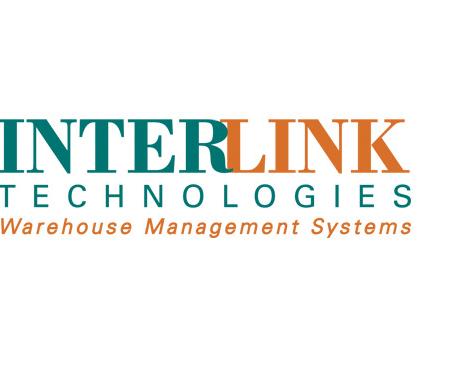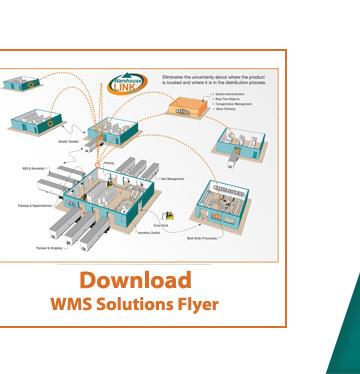Top 10 Warehouse Management Improvements with WMS
1. Access Real-Time Information
Gain visibility to what is happening in the warehouse in real-time. Real-time warehouse functions provides immediate visibility and allows Management to see what occurred, when it occurred, who performed the transaction, and how it affected inventory. Real-time information leads to better decision making for labor requirements, production and manufacturing planning, and inventory management and control.
2. Use Warehouse Space Wisely
Utilizing space efficiently allows for growth without additional real estate investment. Warehouse-LINK® provides open and full-case replenishment options with min/max rules as well as dynamic replenishment locations for seasonal items; product and location attribute management for specific storage requirements, and dynamic location slotting for optimum use of warehouse space. Warehouse-LINK’s® flexibility includes options to mix multiple items in single locations and storing single items in multiple locations.
3. Control Labor
Visibility to workforce performance in the warehouse provides management the opportunity to move labor around the warehouse for fast, efficient processing. Monitoring user performance reveals top performers as well as workers who need additional training.
4. Track and Trace with Detailed Audit Trails
With a few clicks, Warehouse-LINK® easily accesses all information about the inventory. Audit trail details include traceability from raw goods through finished inventory, batch/lot/serial numbers, expiration date(s), mixed part numbers on the moveable unit, inventory ownership, item status and shipping details. The audit trail provides accountability with date and time stamp, function performed, person who performed the activity, and what the inventory looked like before and after the transaction. If or when a product error or recall happens, it is a relief to have in place a dependable, easy-to-access, detailed audit trail.
5. Decrease Fulfillment Time
Inventory received into Warehouse-LINK® is available for fulfillment instantly and immediately visible to warehouse managers as well as sales personnel. Cross-dock eliminates putaway and directs the product to shipping for immediate order fulfillment. Warehouse-LINK® provides numerous order management, picking and shipping methods for faster order processing.
6. Reduce Charge-Backs and Returns
Shipping expired product or the wrong product is costly and creates dissatisfied customers. Strong verification and confirmation processes used by Warehouse-LINK® increases order accuracy, ensuring that the customer gets exactly what they ordered when they want it every time. FIFO rules guarantees that the oldest product ships first and LIFO rules ensure that the customer receives the newest product. The detailed audit trail provides proof of what shipped and refutes any discrepancies.
7. Eliminate Lost Inventory
The need to know exactly what is in inventory and exactly where everything is located is crucial to successful warehouse operations. Warehouse-LINK® tracks and maintains location information by using barcodes on the moveable unit. The barcodes on the moveable unit (pallet, cart, tote, carton, etc.), referred to as “license plates” or “unit ID labels,” electronically contain all the detailed information about the product on the moveable unit. When the unit is putaway, the location barcode is scanned and every time the unit is moved the location is updated, linking the moveable unit to that location and maintaining all details about the inventory linked to that unit. Warehouse-LINK® reliably maintains the transactions and provides visibility throughout the entire warehouse.
8. Operate with Flexibility
Warehouse-LINK’s® user-friendly configuration software easily supports SOP changes, inventory adjustments, location changes, velocity modifications, item ownership and exceptions to the rules without additional software programming time and expense.
9. Manage Multiple Warehouses
Warehouse-LINK® provides management for single warehouses, multiple warehouses, and distribution centers. Multiple warehouse management includes building within a building management (multiple warehouses under one roof). Warehouses can operate independently of each other and have separate business rules or operate with the same business rules. Managing multiple warehouses with one system allows visibility to the entire organization – whether it is the warehouse across the street or a warehouse across the country, access to all inventory information is available.
10. Benefit from Cycle Counts
Common sense indicates that the more volume of an item is handled, the greater the chance for discrepancies. That is why it is important to count the fast moving inventory (the A movers) more frequently. The earlier a discrepancy is found, the easier it is to reconcile. Cycle counting provides a plan or schedule that seamlessly incorporates location counts and verifications throughout daily activities. Cycle counting is an ongoing process versus physical inventory counting that is performed all at once, usually requiring shut down or a time after normal work hours. While both cycle counts and physical inventory counts provide inventory numbers for that exact moment in time, physical inventory counts become tainted as soon as work begins, where cycle count has frequency and real-time advantages. Physical inventory counts may occur once a month, quarterly or even yearly. Planned cycle counts are directed and determined by item velocity. “A movers” are counted more frequently than “B movers” and “C movers.” Warehouse-LINK® also provides the opportunity to perform a cycle count when a location becomes empty. The empty location is an easy count and confirmed with the system that the location is zero. Performing cycle counts “on the fly” or on-demand catches discrepancies early and allows quick resolutions.








